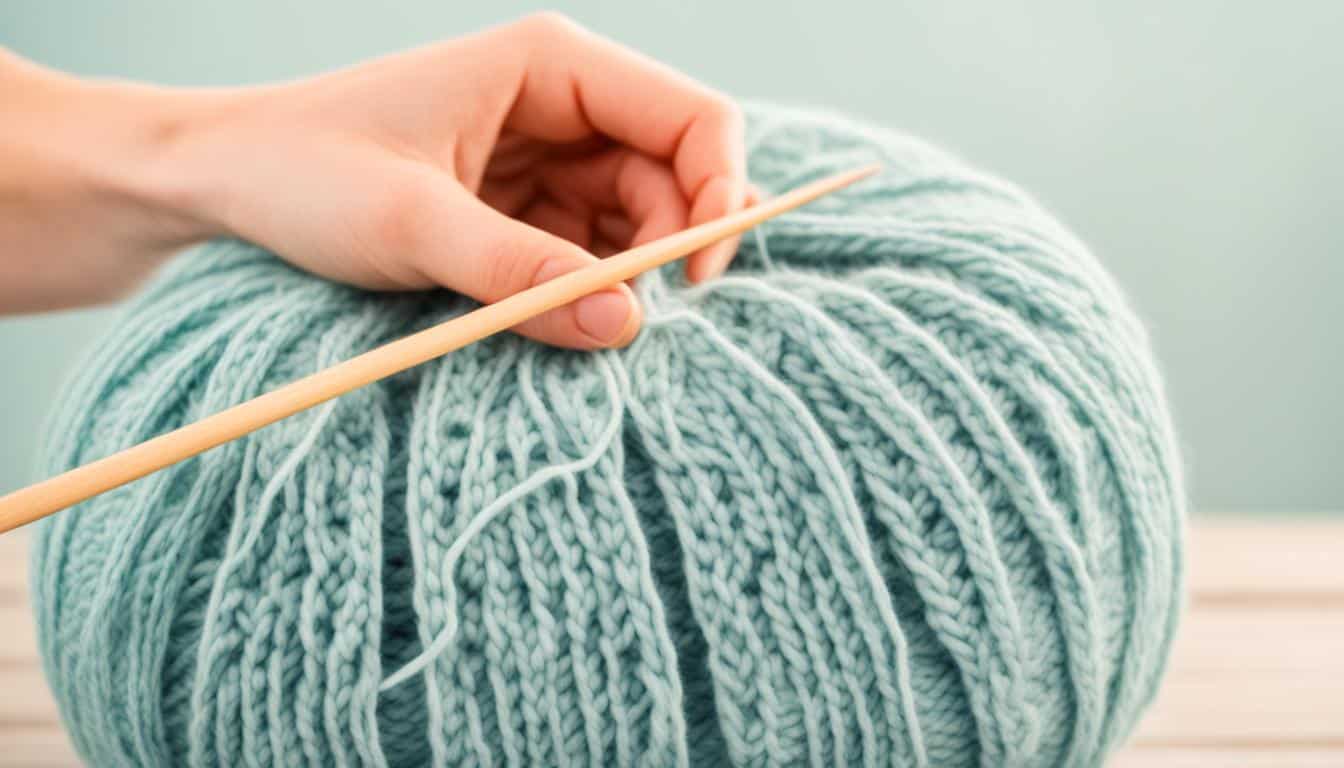Easy Knitting Patterns For Beginners: Start Your Crafting Journey Today
Are you ready to embark on a fulfilling crafting journey? Look no further than easy knitting patterns for beginners. With just a few simple stitches and the right materials, you can create beautiful and practical items that will bring you joy and satisfaction. Whether you’re new to knitting or looking to expand your skills, easy knitting patterns are the perfect way to start.
Knitting is a versatile and timeless hobby that allows you to unleash your creativity and create one-of-a-kind pieces. By starting with easy knitting patterns, you can learn the basics and gradually build your skills. The sense of accomplishment that comes with completing a project is truly rewarding. So why wait? Start your crafting journey today with easy knitting patterns for beginners.
Key Takeaways:
- Easy knitting patterns provide a perfect entry point for beginners.
- Creating with simple knitting projects brings accessibility and satisfaction.
- Knitting allows for artistic expression and the creation of unique items.
- Start your crafting journey today and enjoy the sense of accomplishment that comes with completing projects.
- With easy knitting patterns, you can gradually build your skills and take on more complex projects.
The Basics of Knitting for Beginners
If you’re new to the world of knitting, fear not! Learning how to knit is an enjoyable and rewarding journey that anyone can embark on. In this section, we’ll cover the basics of knitting for beginners, including the necessary materials, fundamental stitches, and essential techniques to get you started on your knitting adventure.
Knitting for beginners requires just a few key tools: knitting needles and yarn. When choosing your knitting needles, opt for a pair that feels comfortable in your hands. For beginners, we recommend starting with medium-sized needles, such as US size 8 or 9, as they provide a good balance between control and ease of use. As for yarn, select a smooth and medium-weight yarn, such as a worsted weight yarn, to make your first projects easier to handle.
Now, let’s dive into the basic stitches that form the foundation of knitting. The two primary stitches you’ll need to master as a beginner are the knit stitch and the purl stitch. The knit stitch creates a smooth, v-shaped pattern, while the purl stitch produces a bumpy texture. By combining these two stitches, you’ll be able to create a variety of beautiful patterns and textures in your knitting.
“Learning how to knit is like unlocking a whole world of possibilities. The simplicity of the knit and purl stitches makes it accessible to beginners, while the endless stitch patterns and project options keep you engaged and inspired.” – Sarah Thompson, Knitting Enthusiast
Once you’ve mastered the basic stitches, it’s time to learn a few essential techniques that will expand your knitting repertoire. These include casting on, which is how you start a project, binding off, which is how you finish your knitting, and increasing and decreasing stitches, which allow you to shape your work.
As a beginner, take a moment to appreciate the versatility and flexibility of knitting. With just a few basic skills and some imagination, you’ll be able to create handmade garments, accessories, and home decor items that reflect your personal style.
Remember, knitting is not only about the final product but also the meditative and calming effect it can have on your mind. So, grab your needles, select a beautiful yarn, and let’s begin your knitting adventure today!
Choosing the Right Yarn and Needles
When it comes to knitting, choosing the right yarn and needles is crucial for a successful and enjoyable project. The type of yarn and needles you select can significantly impact the outcome of your knitting endeavor.
First, let’s talk about yarn. Yarn comes in various weights, which determine its thickness and the recommended needle size. Some commonly used yarn weights include lace, fingering, sport, worsted, and bulky. Each weight has its own characteristics, making it suitable for specific types of projects. For example, lace weight yarn is perfect for delicate shawls and fine knits, while bulky yarn is great for cozy blankets and scarves.
Consider the fiber properties of the yarn as well. Yarn can be made from natural fibers like wool, alpaca, or cotton, or synthetic fibers like acrylic or nylon. Each fiber has its own unique feel and properties, such as warmth, softness, or durability. It’s important to choose a yarn that suits your preferences and the intended purpose of your project.
Now, let’s move on to knitting needles. Knitting needles are available in different materials, such as bamboo, metal, and plastic, each with its own benefits. Circular needles, on the other hand, have become increasingly popular due to their versatility and ease of use. They consist of two needles connected by a flexible cable, allowing you to knit in the round or work on larger projects with ease.
One of the advantages of circular needles is that they distribute the weight of your project more evenly, reducing strain on your hands and wrists. They are also ideal for projects like hats, sweaters, and blankets that require a large number of stitches. Circular needles come in various lengths and needle sizes, so you can choose the ones that best suit your project’s needs.
Now that you understand the importance of choosing the right yarn and needles, take the time to explore different options and find what works best for you. It’s all about finding the perfect combination of yarn and needles that will bring your knitting projects to life.
Simple Stitch Patterns for Beginners
Mastering a variety of simple stitch patterns is an essential skill for every beginner knitter. These basic stitches create the foundation for countless knitting projects, allowing you to unleash your creativity and produce beautiful handcrafted items. In this section, we will explore three essential stitch patterns: the knit stitch, the purl stitch, and the rib stitch.
The Knit Stitch
The knit stitch is the most fundamental stitch in knitting. It creates a smooth and flat fabric, making it perfect for a wide range of projects. To execute the knit stitch:
- Insert the right-hand needle from left to right through the first stitch on the left-hand needle.
- Wrap the yarn around the right-hand needle counterclockwise, forming a loop.
- Slide the right-hand needle with the newly formed loop back through the first stitch, from left to right.
- Slip the original stitch off the left-hand needle, transferring it to the right-hand needle.
Repeat these steps for each stitch until you complete the row. The resulting fabric will have a series of “V” shapes, creating a classic knitted texture.
The Purl Stitch
The purl stitch is another essential stitch in knitting, and it creates a textured, bumpy fabric. To execute the purl stitch:
- Insert the right-hand needle from right to left through the first stitch on the left-hand needle.
- Wrap the yarn around the right-hand needle clockwise, forming a loop.
- Slide the right-hand needle with the newly formed loop back through the first stitch, from right to left.
- Slip the original stitch off the left-hand needle, transferring it to the right-hand needle.
Repeat these steps for each stitch until you complete the row. The resulting fabric will have a series of raised bumps, creating a unique texture that adds depth to your knitting projects.
The Rib Stitch
The rib stitch combines the knit stitch and the purl stitch in a specific pattern, producing a stretchy and reversible fabric. The rib stitch is commonly used for cuffs, collars, and borders. To execute the rib stitch:
- Start with a row of knit stitches.
- On the next row, alternate between knitting and purling stitches.
- Continue this pattern, knitting the knits and purling the purls, to create the rib stitch.
The rib stitch is often represented as “K1, P1” or “K2, P2,” indicating the number of knit and purl stitches in the pattern. Experiment with different combinations to achieve visually stunning results.
With regular practice and patience, you will become comfortable with these simple stitch patterns and open up endless possibilities for your knitting projects. Remember to maintain consistent tension throughout your work for an even and polished finish.
Now, let’s take a look at the visual aids below to help you better understand these stitch patterns:
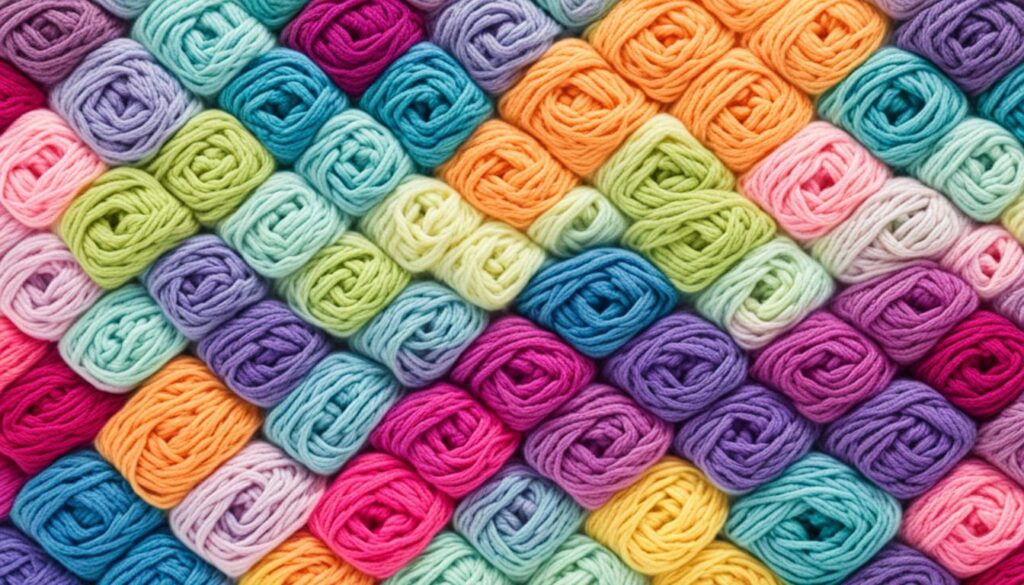 |
Easy Knitting Projects for Beginners
If you’re a beginner knitter, you’ll be delighted to know that there are plenty of easy knitting projects that you can start with. These projects are designed to help you practice your knitting skills, gain confidence, and create beautiful items that you can be proud of. Whether you’re looking to make a cozy scarf, a soft baby blanket, or a useful dishcloth, there’s a project that suits your interests and skill level.
Scarves
Scarves are one of the most popular knitting projects for beginners. They’re relatively simple to make and provide a great opportunity to practice your knitting stitches. You can choose from various stitch patterns and experiment with different yarns to create a scarf that reflects your personal style. Scarf knitting allows you to showcase your creativity and create a versatile accessory that can be worn during any season.
Baby Blankets
Knitting a baby blanket is not only a practical project but also a heartfelt gift for a newborn. These blankets can be made with soft, baby-friendly yarns and gentle colors, making them perfect for little ones. Simple stitch patterns like garter stitch or seed stitch work well for baby blankets and are easy for beginners to master. As you knit the blanket, you’ll not only improve your knitting skills but also create a cherished keepsake for a baby.
Dishcloths
Knitting dishcloths is a practical and rewarding project for beginners. Not only are they quick to make, but they also serve a useful purpose in the kitchen. Dishcloths can be knit with durable cotton yarns that can withstand repeated use and washing. They offer an opportunity to experiment with different stitch patterns, such as the classic garter stitch or the more intricate basketweave stitch. Knitting dishcloths is an excellent way to add a personal touch to your kitchen and showcase your knitting skills.
These easy knitting projects for beginners are just the beginning of your knitting journey. As you complete these projects, you’ll gain confidence in your knitting abilities and be ready to take on more challenging patterns. Remember to enjoy the process and have fun creating beautiful and functional items with your knitting needles!
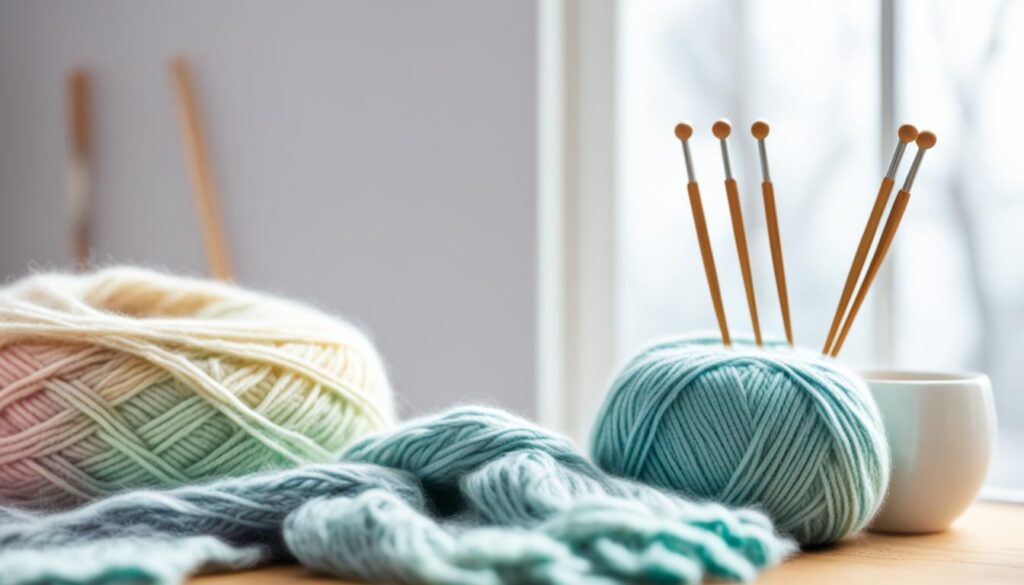
| Project | Difficulty Level | Description |
|---|---|---|
| Scarf | Easy | A versatile accessory that allows you to practice various stitch patterns. |
| Baby Blanket | Easy to Intermediate | A soft and cozy blanket perfect for little ones. |
| Dishcloth | Easy | A practical kitchen essential that allows you to experiment with different stitch patterns. |
Tips and Tricks for Beginner Knitters
Embarking on your knitting journey can be incredibly exciting, but it’s natural to encounter some challenges along the way. Don’t worry! In this section, we’ve compiled a list of valuable tips and tricks to help you navigate through your beginner knitting experience with ease. These helpful insights will boost your confidence, improve your knitting skills, and make your knitting experience even more enjoyable.
1. Mastering Tension Control
One of the key aspects of knitting is achieving consistent tension throughout your project. Tension control refers to the evenness of your knitting stitches. Practice makes perfect, so take your time to find a comfortable tension that works for you.
Pro Tip: When knitting, try not to grip the needles too tightly. Relax your hand and allow the yarn to flow smoothly, ensuring your stitches are consistent in size.
2. Fixing Common Mistakes
Mistakes happen to the best of us, so it’s essential to know how to fix them without getting frustrated. Whether it’s a dropped stitch or an accidental extra increase, don’t worry. There are simple ways to correct these errors and continue knitting.
- Fixing dropped stitches: Use a crochet hook to carefully pick up the dropped stitch and put it back onto the needle in the correct order.
- Undoing stitches: If you notice a mistake several rows back, you can carefully unravel your knitting stitch by stitch until you reach the error. Then, you can knit the stitches back up, ensuring accuracy.
3. Building Your Knitting Skills
As a beginner knitter, it’s important to gradually build your skills and expand your repertoire. Start with simple projects that allow you to practice basic stitches and gradually progress to more complex patterns. Challenge yourself, but don’t rush the process.
Pro Tip: Consider joining a knitting group or taking a class to learn from experienced knitters. These communities can provide valuable support, guidance, and inspiration to help you enhance your knitting skills.
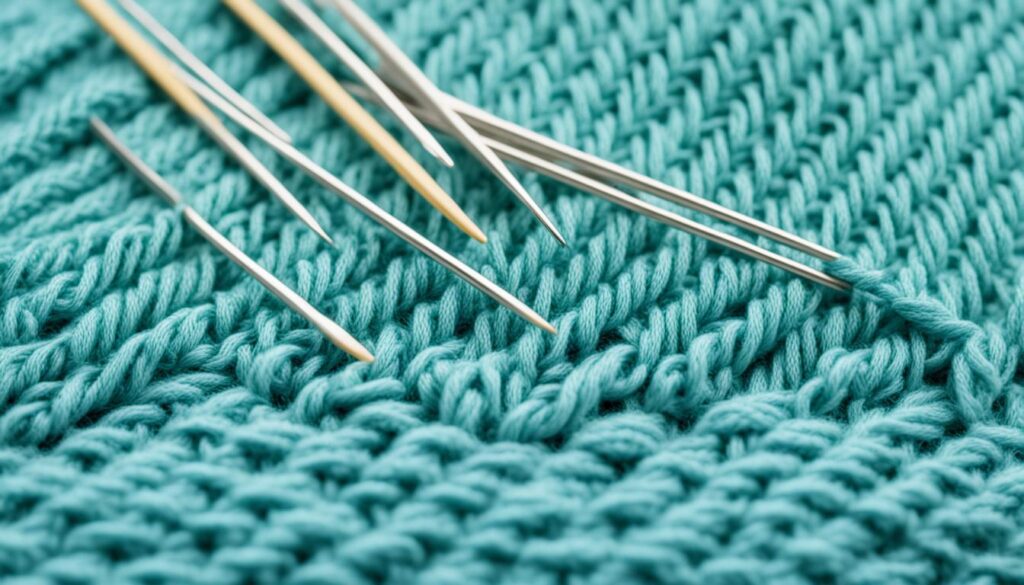
4. Exploring New Techniques and Patterns
Once you feel comfortable with the basics, don’t be afraid to explore new techniques and experiment with different knitting patterns. This allows you to grow as a knitter and discover your personal style.
Remember, knitting is a creative outlet, so let your imagination run wild! Try new stitch patterns, experiment with different yarns, and challenge yourself with unique projects.
Pro Tip: Keep a knitting journal to record your progress, favorite patterns, and ideas for future projects. It’s a great way to track your growth and stay organized.
With these tips and tricks, you’ll not only enhance your skills but also nurture your knitting experience. Embrace the learning process, enjoy every stitch, and watch as your knitting skills flourish!
Free Knitting Patterns and Resources
Are you a beginner knitter looking for free knitting patterns and resources to jumpstart your crafting journey? Look no further! We’ve curated a list of fantastic resources that will provide you with inspiration and guidance as you embark on your knitting adventure.
Discover a treasure trove of free knitting patterns that cater to all skill levels and interests. Whether you’re looking to knit a cozy scarf, a cute baby blanket, or a practical dishcloth, there’s a pattern out there for you. Check out reputable websites like Ravelry, Lion Brand, and Knitting patterns galore for an extensive selection of patterns to choose from.
But we understand that sometimes written instructions can be a bit overwhelming, especially for beginner knitters. That’s why we recommend video tutorials as an invaluable resource. Video tutorials allow you to visually follow along with an experienced knitter, helping you grasp knitting techniques and stitches more easily. Websites like Craftsy, KnitPicks, and YouTube offer a wide range of video tutorials specifically designed for beginners.
“Video tutorials are a game-changer for beginners. Being able to see the knitting techniques in action makes the learning process much more intuitive and enjoyable.” – Emily, avid knitter
But patterns and video tutorials are just the beginning. To enhance your knitting experience further, we recommend exploring websites that offer beginner-friendly knitting projects. These projects are specifically designed with beginners in mind, using simple stitch patterns and clear instructions to ensure success. Websites like AllFreeKnitting and LoveCrafts have a dedicated section for beginner-friendly projects that will help you build your skills and confidence.
Bonus Resource: Pattern Central
If you’re looking for a one-stop-shop for knitting patterns, tutorial videos, and a supportive community, Pattern Central is the place to be. This comprehensive website offers a vast collection of free knitting patterns for all skill levels. You can browse through different categories, filter patterns by difficulty level, and even join forums to connect with fellow knitters.
Remember, as a beginner, it’s essential to start with projects that match your skill level. Start small and gradually progress to more complex patterns as you gain confidence and experience. Don’t be afraid to make mistakes – it’s all part of the learning process!
With these free knitting patterns and resources at your disposal, you’ll have everything you need to create beautiful, handcrafted pieces. So grab your needles, choose a pattern, and let your creativity flow!
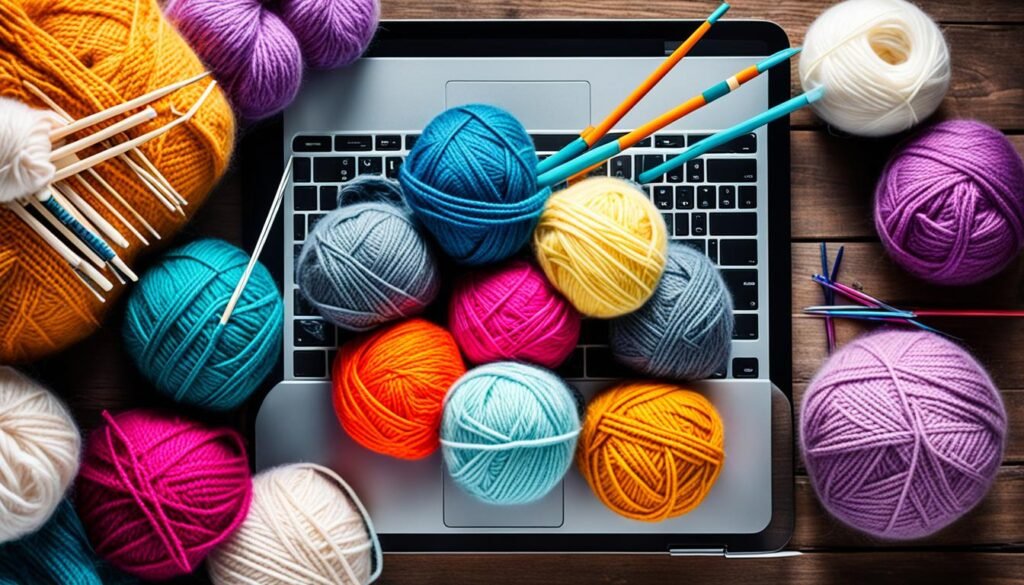
Progressing as a Knitter: Next Steps
Now that you’ve mastered the basics of knitting and completed a few easy projects, it’s time to take your knitting journey to the next level. As an advanced beginner, you have a solid foundation to explore new techniques and tackle more complex projects. Here are some exciting next steps to help you continue your knitting adventure:
Transitioning from Beginner to Advanced Beginner
As an advanced beginner, you’re ready to expand your knitting skills and try more intricate patterns. This transition involves building on your existing knowledge and challenging yourself with more advanced techniques. Take the time to practice and master new stitches, such as cables or lace, to add depth and texture to your projects.
Tackling More Complex Projects like Knitting Dishcloths
One way to challenge yourself as an advanced beginner is by knitting dishcloths with new stitch patterns. Dishcloths are small projects that allow you to experiment with different techniques and stitch combinations. They are also practical and make for great gifts or additions to your own kitchen. Explore various stitch patterns, like the basketweave or honeycomb stitch, to create unique dishcloths that showcase your progress as a knitter.
Introducing Double-Pointed Needles
Double-pointed needles are a valuable tool for knitting in the round or working on smaller, cylindrical projects such as socks, hats, or gloves. Learning to use double-pointed needles opens up a whole new world of knitting possibilities and allows you to create seamless, three-dimensional items. Start with simpler patterns, like fingerless gloves or a basic hat, to get comfortable with these needles. With practice, you’ll soon be confidently tackling more intricate projects.
Remember, as you progress as a knitter, it’s important to challenge yourself while still enjoying the process. Don’t be afraid to make mistakes and learn from them. Embrace the learning curve, and soon you’ll be creating beautiful, complex pieces that showcase your newfound knitting skills.
By exploring these next steps, you’ll continue to grow as a knitter and expand your repertoire of skills. Enjoy the journey and let your creativity flourish as you take on more advanced projects. Happy knitting!
Also Read:- Embark On Your Audio Journey: A Comprehensive Guide To Starting A Podcast
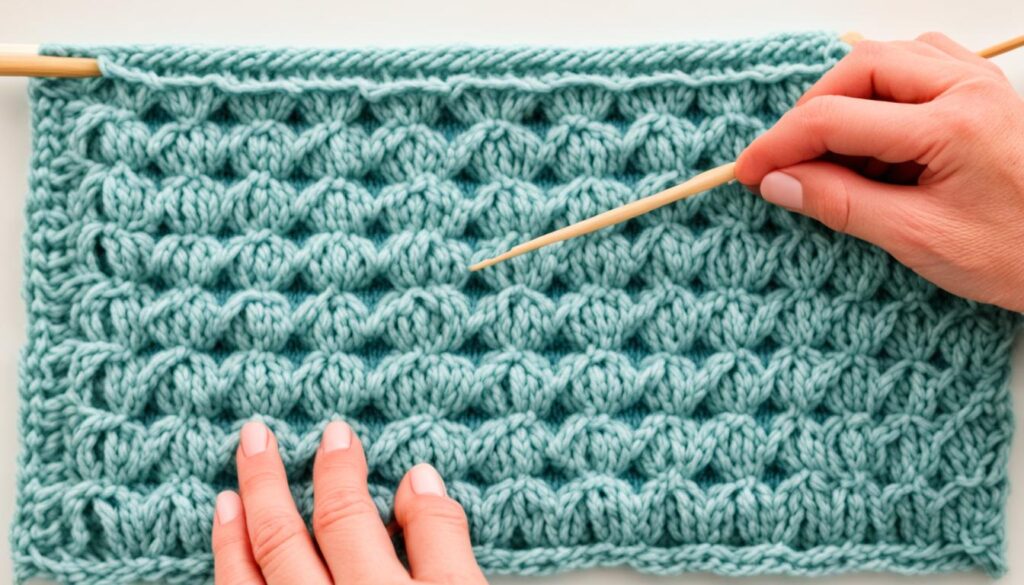
Conclusion
As we conclude our exploration of easy knitting patterns for newcomers, it becomes evident that knitting is not only a creative craft but also an accessible and enjoyable activity for beginners. By following the step-by-step instructions and practicing the basic stitches, beginners can embark on a fulfilling crafting journey.
Throughout this article, we have highlighted the importance of choosing the right yarn and knitting needles to ensure a smooth and successful knitting experience. We have introduced various simple stitch patterns and easy knitting projects that are perfect for beginners to hone their skills and create beautiful handmade items.
Whether it’s knitting scarves, baby blankets, or dishcloths, these beginner-friendly patterns offer endless possibilities for creative expression. By applying the tips and tricks shared in this article and exploring the abundant free knitting patterns and resources available, newcomers can continue to expand their knitting skills and unlock new horizons in their craft.
In conclusion, knitting patterns for newcomers are the gateway to a captivating world of creativity and self-expression. So why not pick up your yarn and needles today and embark on a knitting journey that is sure to bring joy and satisfaction? Happy knitting!
FAQs
Q: What are some popular easy knitting patterns for beginners?
A: Some popular easy knitting patterns for beginners include stockinette stitch scarves, basic knit stitch afghans, and simple baby booties.
Q: How can I start my knitting journey as a beginner?
A: To start your knitting journey as a beginner, you can begin with easy projects such as scarves or baby hats using simple stitch patterns like garter stitch or stockinette stitch.
Q: Are there free and easy knitting patterns available for beginners?
A: Yes, there are many free and easy knitting patterns available for beginners, including free afghan patterns, infinity scarves, and beginner-friendly baby booties.
Q: What are some beginner knitting projects that I can try?
A: Some beginner knitting projects that you can try include knitting simple scarves, baby hats, and basic afghans using easy stitch patterns.
Q: What is the best type of yarn for beginner knitters?
A: For beginner knitters, it is recommended to use chunky or bulky yarn as it is easier to work with and allows you to see your stitches more clearly.
Q: What are the differences between garter stitch and stockinette stitch?
A: Garter stitch is a simple knit stitch pattern where you knit every row, while stockinette stitch alternates between knit and purl rows to create a smooth fabric.
Q: Can I find free knitting patterns specifically designed for beginners?
A: Yes, there are many free knitting patterns available online that are specifically designed for beginners, offering step-by-step instructions and simple techniques to follow.
